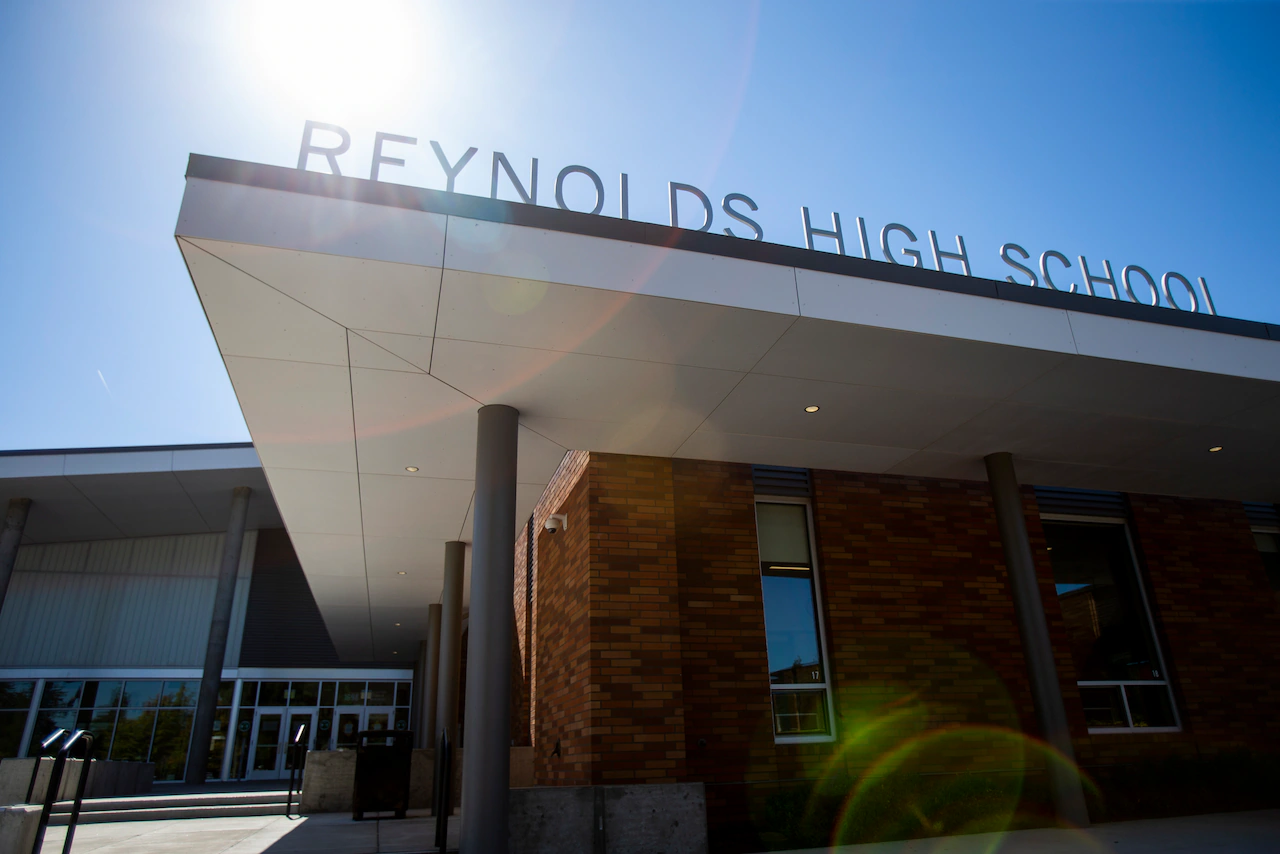Disruptive midyear layoffs loom for a Portland-area school district in tough financial straits

Plans for how to close a $5.5 million budget hole at Multnomah County’s third-largest school district are up in the air after teachers and support staff overwhelmingly rejected a proposal to absorb 10 days without pay this school year.
If the Reynolds School District and its employees can’t come to an agreement by early November, Reynolds will need to cut an estimated 79 positions by Nov. 7, the end of the first quarter, Superintendent Frank Caropelo told The Oregonian/OregonLive. Only a tiny fraction of those could be eliminated by not filling open jobs, he said.
Those whose jobs are set to be eliminated will find out the second week of October. They would likely include teachers, custodians, paraprofessionals and school bus drivers, the superintendent said.
Many school districts around Oregon are bracing for yet another round of budget cuts in the 2026-2027 school year, amid declining enrollments, rising costs and dwindling reserves. The projected $400 million dollar hole in the state’s 2025-2027 budget, due to the Trump administration’s tax code changes, makes it highly unlikely that the state will swoop in with additional funds.
But Reynolds — which serves one of the most diverse, poorest and highest needs population of students in the state and has lost 20% of its enrollment over the last decade — stands out for being in dire straits for the current school year. Its savings last year dipped below the recommended 5% threshold, according to school board chair Michael Reyes, after years of trying to stave off cuts.
The potential midyear layoffs, and the accompanying disruptions that would cause for students, come after the district already made deep across-the-board cuts last spring, including the loss of 23 positions for teachers who work with students learning to speak English.
“We are looking to work with our associations to avoid further staff reductions,” Caropelo said Friday. “That is first and foremost. The reductions will be felt in every school, in every department. There will be less custodial services and bus drivers. Class sizes will go up. We’ve implemented block schedules at middle and high schools to provide more prep time, but we will have to return to a standard, traditional, seven period day. We won’t have a choice. We have cut everything that is nonstaff, as much as we can and still be able to function.”
A single school day for the 9,600-student district that sprawls from Portland to Troutdale costs about $550,000, primarily for employee pay, Caropelo said. The tentative agreement for a 10-day furlough that union members voted down would have meant staff would have lost pay for four holidays and six days would have been lopped off of the instructional calendar. All told, it would have meant a salary cut of about 5% and would have whittled down the teaching staff’s negotiated 7% cost of living adjustment to 2%. The same furlough pay cut applies to non-unionized staff, from Caropelo on down.
The tentative agreement preserved five planning days for teachers and had triggers to restore unpaid days if new state or grant money turned up or if auditors found that the district’s ending fund balance from last school year was larger than expected.
Jeffrey Fuller, who teaches at Reynolds High School and leads the Reynolds Education Association, said he agreed to bring the 10 day furlough proposal to his members knowing that it would be a hard sell, particularly given simmering anger over raises for a handful of senior-level employees.
Seventy-five percent wound up voting against the tentative agreement, he said.
His members are frustrated with both district and state leaders, Fuller said. Teachers and support staff believe both that the district is overestimating some costs and underestimating how much money is available and that the state has systematically underfunded schools, particularly those that serve high concentrations of students whose families live near the poverty line and those with high percentages of students who need special education services.
The union is surveying its members to gauge their preferences for the next stage of negotiations, he said.
Not helping matters: The disclosure that several senior-level central office employees received $26,000 raises over the summer, Fuller said.
That’s not enough to make or break a district budget of about $250 million. But it landed as a symbolic slap in the face when so many other staff were being asked to do more work for less pay, Fuller said.
“Nobody is offering staff more money than already budgeted for taking on more work,” Fuller told the school board during an August meeting.
Caropelo, who took over at Reynolds in 2022 after the previous superintendent, Danna Diaz, resigned midyear, said he approved the raises to keep key leaders of the human resources and finance departments, after years of turmoil and turnover.
“Those departments were so broken they didn’t pay staff on time twice in the year before I got there,” Caropelo said. “I brought in effective leaders and they are making a difference. It is essential that we maintain the consistency and continuity of leadership in those departments.”
Both Caropelo and Fuller said the budget upheaval comes at a precarious time for Reynolds and could counteract some hopeful signs of progress.
The percentage of ninth graders on track to graduate has been rising, along with graduation rates. Dual language programming has expanded to new elementary schools and the high school’s career-technology electives are growing with the recent addition of cosmetology and business/marketing, with dental assisting in the pipeline, Caropelo said.
“We’re starting to turn the corner,” he said. “Some of it is schedule work, with our kids in the hallway four times during the day, instead of seven or eight. Our kindergartners are showing growth in early reading. Even our attendance is coming back a little bit.”
The goal, he said, is to preserve as much of that momentum as possible.
Fuller said he’s holding out hope that the district will pause on any layoffs while the two sides work to find another solution. Negotiations are slated to resume Thursday.
— Julia Silverman covers K-12 education for The Oregonian/OregonLive. Reach her via email at jsilverman@oregonian.com



